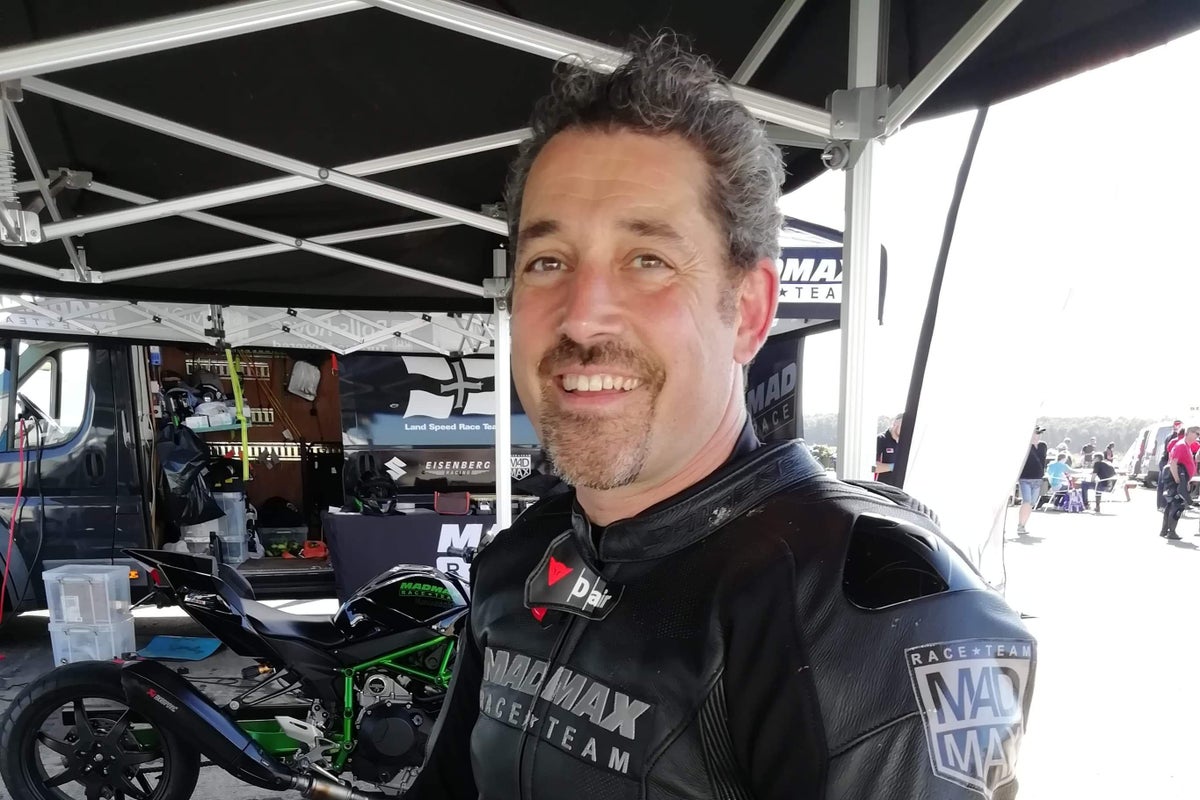
A millionaire businessman who crashed at 244mph while attempting to set a speed record in a Porsche 911 Turbo had taken one hand off the wheel to deploy a parachute, an inquest heard.
Zef Eisenberg, 47, was trying to prove he had created the world’s fastest Porsche and was attempting a record “flying mile” when he was killed at Elvington Airfield, near York, in October 2020.
During the run, the car went airborne – both barrel rolling and spinning end over end – and travelled 500 metres before it came to a stop, and Mr Eisenberg suffered multiple injuries.
Coroner Jon Heath recorded a conclusion of misadventure, after hearing that Mr Eisenberg wrongly braked then deployed the parachute, making the car unstable and causing it to take off.
He found that Mr Eisenberg died from multiple traumatic injuries sustained in the crash while “driving at approximately 244mph during a speed record attempt”.
Mr Eisenberg’s modified but street-legal Porsche was fitted with a parachute which required him to take his left hand off the steering wheel to deploy it using a lever.
Steve Gardner, a collision investigator for North Yorkshire Police at the time, said an alternative method to deploy a parachute was to use a button mounted on the steering wheel, but that was not fitted to the vehicle.
“The movement to deploy the parachute was quite substantial,” the former traffic officer said.
“It was a lever that needed to be pushed forwards.”
Mr Gardner watched footage of the crash as part of his inquiries, including pictures taken inside the car, and he noted a “minimal” but “noticeable” twitch on the steering wheel in the moment before the loss of control.
Mr Eisenberg had carried out 10 runs on the airfield that day and planned to carry out one final attempt, which happened in dry conditions.
Analysis of the car found no faults in the brakes, tyres or aerodynamics.
Family members, who attended the hearing remotely, expressed concerns about whether he was correctly strapped into the Porsche, using a six-point harness which was attached to the car in five places.
Jamie Champkin, from Motorsport UK – the body which provided Mr Eisenberg with a permit to make the record attempts that day, told the inquest the forces involved in the crash were huge, and could not have been survived.
He said: “The car became airborne very quickly, it travelled 513 metres before coming to a rest.
“The minute it is in the air, there’s no friction, apart from air friction, to restrain its speed in any way.
“We know it has barrel-rolled but it has also tumbled.
“There came a point in that tumble that the car came down nose first.
“We don’t know precisely what speed it was doing at the time.
“Our estimates were it was probably still doing 150mph, maybe 250kmph, but it hit the ground and our very basic calculations would suggest an impact force may be as high as 37,000lbs, or 218 times Mr Eisenberg’s body weight.
“This incident was not survivable in that context.”
The inquest previously heard Mr Eisenberg wanted to show he had created the world’s fastest Porsche for “bragging rights”.
He had already survived Britain’s fastest motorcycle crash at the same airfield in 2016 when his turbine-powered motorbike failed to stop at the end of the runway, breaking bones in his legs and pelvis – which meant he had to learn to walk again.
The former teenage bodybuilder from north London had made his fortune with the Maximuscle fitness brand of protein powder, eventually selling to pharma giant GlaxoSmithKline and moving to Guernsey.
His enthusiasm for motor sport led to presenting the ITV show Speed Freaks, focusing on the design, build and engineering of extreme cars.
Following his death, Mr Eisenberg’s family described him as “a true genius with unique talents”.
The coroner said he will make a report, aimed at preventing future deaths, asking Motorsport UK to consider its regulations about the strength of the chassis at which point harnesses are mounted, although that was not a factor in Mr Eisenberg’s case.







